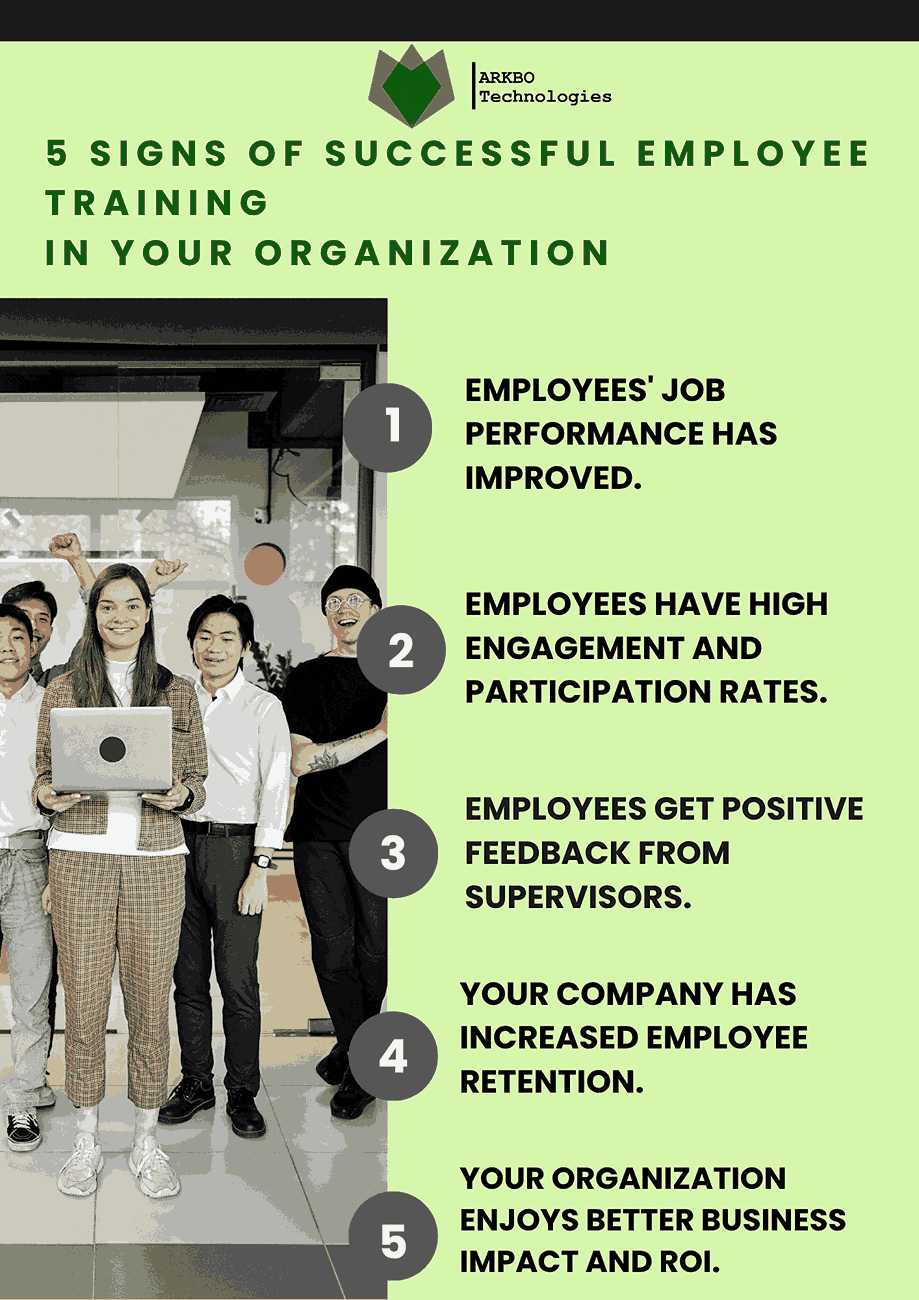
Companies perform better when employees are properly trained; they see 17% more productivity and 21% more profit (Devlinpack). This data shows that investing in employee training is a strategic necessity.
But how can companies know if their training programs are truly working? In this blog, we explore five clear signs that you, as an employer, can determine whether employee training efforts are effective.
Here are the things employers or HRs, or L&D professionals should look for to check the training’s effectiveness.

The most immediate sign of successful training is improvement in employees’ job performance. Trained employees are now able to complete their tasks more efficiently, with fewer errors and greater confidence.
Your employees are now able to complete tasks at a greater speed and efficiency. Their ability to take on complex tasks and improved problem-solving skills are other tell-tale signs of effective employee training.
Employee engagement refers to the level of enthusiasm and dedication a worker feels toward their job. These involved employees care more than a paycheck and may consider their growth with their performance. To make such engagement, job and role-related training has to be provided. Employee training has to be intriguing, triggering them to be more involved in the training. In fact, engaged employees are 87% more likely to stay in the company (Qualtrics). Some of the signs of engaged employees:
Eagerness to participate more
Completion of assignments
Interacting with the training content or trainer
More enthusiasm in their work
To measure training effectiveness, one of the indirect ways is feedback from the learners and their relevant supervisors. Employees who feel that training was helpful and relevant are more likely to communicate the quality of training and the content. Such enthusiasm and positive feedback inspire the HRs and L&D managers to come up with better training.
Supervisors can look for significant improvements in employees' behavior post-training. They can use surveys, one-on-one check-ins, and even have a post-training evaluation.
Employee retention is an organization's ability to keep its employees from leaving, i.e., reduce employee turnover. One of the effective retention strategies is providing your employees with relevant training.
Longer employee retention indicates that a company's training program is effective. In fact, if employees receive training, around 80% of employees would stay longer (Builtin). Well, to detect training-led retention, it does take time. However, such retention contributes to uplifting the company.
Result-inducing employee training translates into better business performance, faster processes, and smarter decision-making across the company.
For example, Well-trained employees can reduce errors, handle customers more efficiently, or speed up project delivery times. These improvements lead to increased productivity, higher customer satisfaction, reduced costs, and profits.
Despite all efforts and planning, your employee training may not always hit the mark. You may notice signs like poor performance, disengagement, or no measurable business impact.
In such a situation, employers and L&D experts can take the following steps:
1. Find the root cause of why training isn’t working. Check for factors such as delivery, unclear content, or lack of relevance to the job.
2. State clear, specific training goals for employee roles and business outcomes.
3. Listen to your employees on what’s missing, confusing, or unhelpful.
4. Customize training to fit actual job tasks.
5. Refresh the training format to keep things engaging.
6. Use a learning platform like ARKBO to deliver structured training, assign courses, and track employee progress all in one place. The real-time dashboards and reports of ARKBO LMS help HR and L&D teams monitor key metrics like course completion, engagement, and performance improvements. This platform also offers inclusive corporate training.
7. Train your trainers to engage employees and communicate effectively.
8. Reinforce learning post-training
9. Measure results such as performance, retention, or error rates.
10. Build a culture of learning to celebrate progress.
Final Thoughts
If you have introduced employee training, you must be eager to know what kind of impact it has brought to the employees. You can check for the above-mentioned signs. However, if these signs are missing in your current training efforts, it’s a clear indicator that the training needs an upgrade.
Further, to make the employee training more effective, you have to adopt modern training methods, which include implementing a Learning Management System (LMS). ARKBO LMS is a leading LMS in Nepal, specializing in corporate training for banks, finance, education, etc.
Book a Free Demo Today and start transforming your employee training.